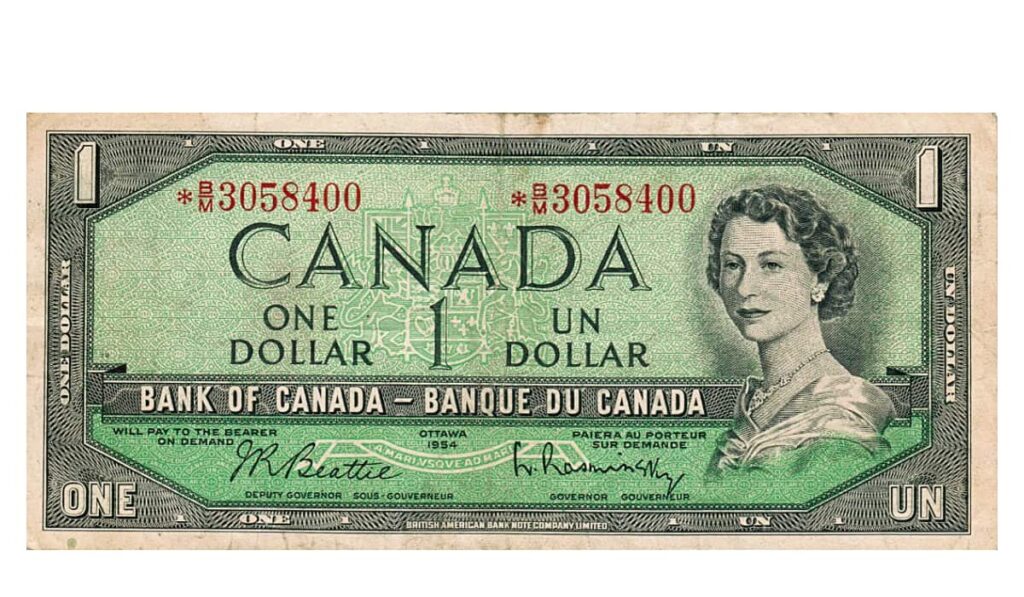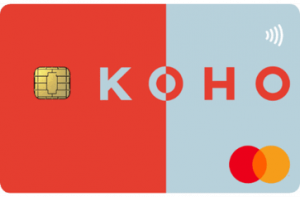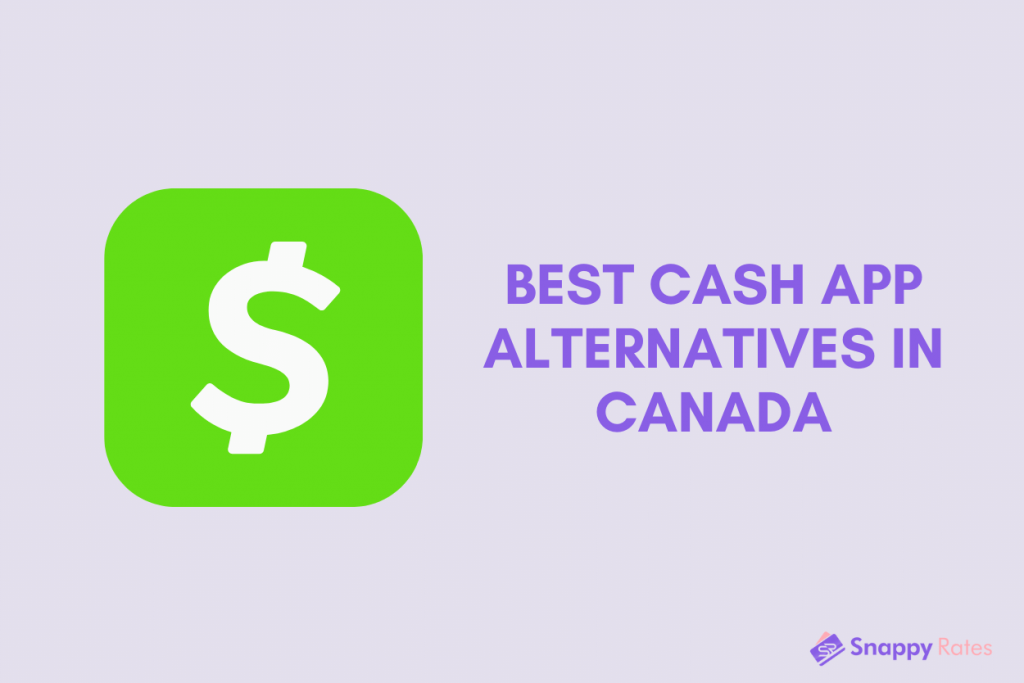The year 1989, when the government of Canada printed the last of the Canadian $1 bill, may not be that long ago. But the existence of the banknote goes as far back as the 1800s.
The length of time it has been in circulation has made the note a historical item. You could be holding a $1 Canadian bill worth thousands of dollars.
For example, a 1 dollar bill Canada 1973 issue can be worth more than $11,000, provided it is in mint condition.
Read on to learn more about the value of the Canadian dollar bill and how much it can fetch nowadays.
Main Highlights
- The value of a 1973 Canadian 1 dollar bill with the Lawson-Bouey signature combination and a prefix of *MD ranges from $1,350 to $11,300.
- A 1954 Canadian $1 bill with the devil’s face, which has a grade of GUNC-66, is worth up to $9,000.
- You can determine the worth of a Canadian $1 bill, or any old bill for that matter, through factors like rarity, quality, and the going rate.
What You Need To Know About the Canadian $1 Bill?
Before the Bank of Canada came to be, other financial institutions released their versions of the Canadian $1 bill.
The Montreal Bank in 1821 issued a $1 banknote produced by American printer Reed Stiles and Company. The design featured Britannia with a ship and an image of a Charles IV Spanish dollar.
In 1923, the Dominion of Canada released a standard $1 banknote with the portrait of King George V on the front. On the reverse was a view of the Library of Parliament in Ottawa.
In 1935, the Bank of Canada opened and issued the first banknote series. The Canadian Bank Note Company Ltd. printed the notes.
Two years later, the Bank of Canada released a new design that featured the image of the new King, George VI.
In 1954, a new series of bills came out with the portrait of Queen Elizabeth II featured on the front. Many described it as the “Devil’s Head.”
The Canadian dollar bill remained in circulation until April 20, 1989, when the last Scenes of Canada $1 bills rolled off the press.
They were also the last $1 banknotes that the Bank of Canada issued since it was to be replaced by the loonie, or the $1 coin, which began circulating two years prior.

Source: 1954 one-dallar-bill via 604 NOW and Bob Swanson / Flickr
Value of the 1973 Canadian 1 Dollar Bill
The 1973 Canadian 1 dollar bill value generally depends on several factors, such as the prefix and the banknote quality.
For example, the value of a 1973 Canadian 1 dollar bill with the Lawson-Bouey signature combination and a prefix of *MD ranges from $1,350 for a G-4 graded banknote to $11,300 for a note with a grade of GUNC-65.
A grade of G means Good, which means the banknote may have several tears and defects, but no large section of the note is missing. GUNC means the banknote is near-perfect.
The 1 dollar bill Canada 1973 issue is part of the Scenes of Canada that the Bank of Canada issued on June 3, 1974.
One striking feature of this banknote is the image on the back showing a river filled with logs floating past Parliament Hill.
What is the 1954 Canadian One Dollar Bill Devil Face Valued At?
Several articles on the internet have reported that the Canada one dollar bill 1954 issue with the devil face may be worth up to $7,000 – if it is in mint condition.
Meanwhile, at CoinsandCanada.com, the value of a 1954 Canadian $1 bill with the devil’s face ranges from $18.90 if it has a grade of VF-20, to $9,000 if its grade is GUNC-66.
A grade of VF (or Very Fine) indicates that the bill is a clean banknote with signs of wear on the corners and edges.
The 1954 issue was part of the Landscape Series and featured a portrait of Queen Elizabeth II on one side and the Canadian prairie and sky on the other.
This release was widely known for the “Devil’s Face” image that peered out from the Queen’s hair.
Much controversy erupted from the image that the bills had to be taken out of circulation and replaced with a modified version.
How to Determine the Worth of the Canadian 1 Dollar Bill
There are factors that help determine the worth of the Canadian 1 dollar bill. Some of these are:
- Rarity. This involves the number (or mintage) of bills that were first produced and the number of banknotes still around today.
- Quality. A rare Canadian 1 dollar bill in mint condition can fetch a high price. The higher the quality of the bill, the higher its value. But its value decreases with wear and tear.
- The Going Rate. An indication of the value of a Canadian 1 dollar bill is how much others are selling it for – whether online or in a physical store.
FAQs
What is the oldest $1 bill?
The $1 bill issued by the Montreal Bank in 1821 is the oldest. It was part of the first Dominion of Canada banknotes printed in 1870, shortly after the Confederation. It was printed by Reed Stiles and Company.
Are Canadian $1 bills still legal?
Since January 1, 2021, the Canadian $1 bills are no longer considered legal tender, so they cannot be used in cash transactions. You can redeem the bills for face value at financial institutions.
What is the most valuable dollar bill?
It is a Dominion of Canada $500 banknote, which sold for CA$528,750 in an auction in June 2021. Considered the Holy Grail of the Dominion of Canada Series, the rare 1911 $500 features the portrait of Queen Mary, the wife of King George V, who reigned from 1911 to 1936.
Where can I sell my old Canadian bills?
You can sell your old Canadian bills at the Bank of Canada, private dealers, old note collectors, and local banks. Experts recommend getting an appraisal before selling old banknotes since some are worth more than their face value.
When did Canada stop using $1 dollar bills?
Canada stopped printing the $1 bill on April 20, 1989, and stopped issuing them in June. This was two years after the release of the new $1 coin called the loonie. The government wanted to switch to using $1 coins since they lasted much longer and saved the mint a lot of money.
Related:





